FC ⟷ VMC Telemetry Cable
3 minute read
Overview
It’s important that the FC and VMC can communicate with each other. This bi-directional communication will allow us to receive telemetry data from the FC and send data to it from the VMC. If you recall, before we communicated with the FC using a micro-USB cable connected to a PC running QGroundControl. What you will be able to do now is communicate over a WiFi network, which will make this process easier.
In addition to a wireless link between the AVR drone and QGC you will learn how to configure position hold capabilities using external cameras. You may have noticed with the basic drone that the drone required constant input from the pilot to maintain position in stabilized flight mode. With the assistance of these cameras you will be able to hover in position mode with ease! The cable we build in this section makes this all possible.
Locate the following components in the photo below:
- 6 pin cable from the Pixhawk box
- 40 pin connector housing
- 3 female to female wires (black, purple, and grey)
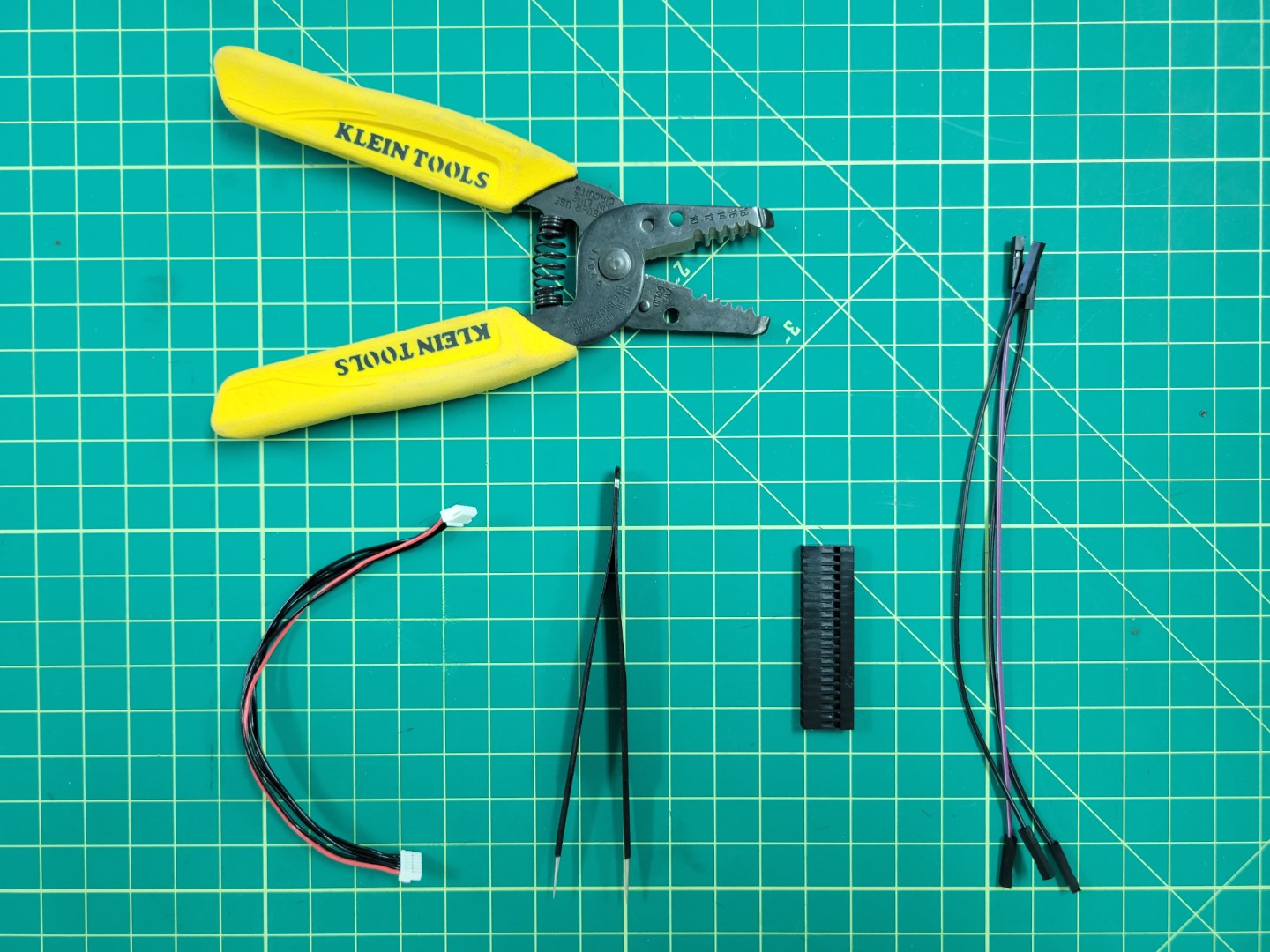
Necessary components for telemetry cable
Creating the Cable
Before we start building the telemetry cable let’s take a quick look at the following wiring diagram. The middle area represents the 40 pin connector housing. Pay attention to the pinout from the connector housing to the TELEM1 port on the Pixhawk FC. We will be using the following pins:
- Pin 2 - TX - Grey
- Pin 3 - RX - Purple
- Pin 6 - GND - Black
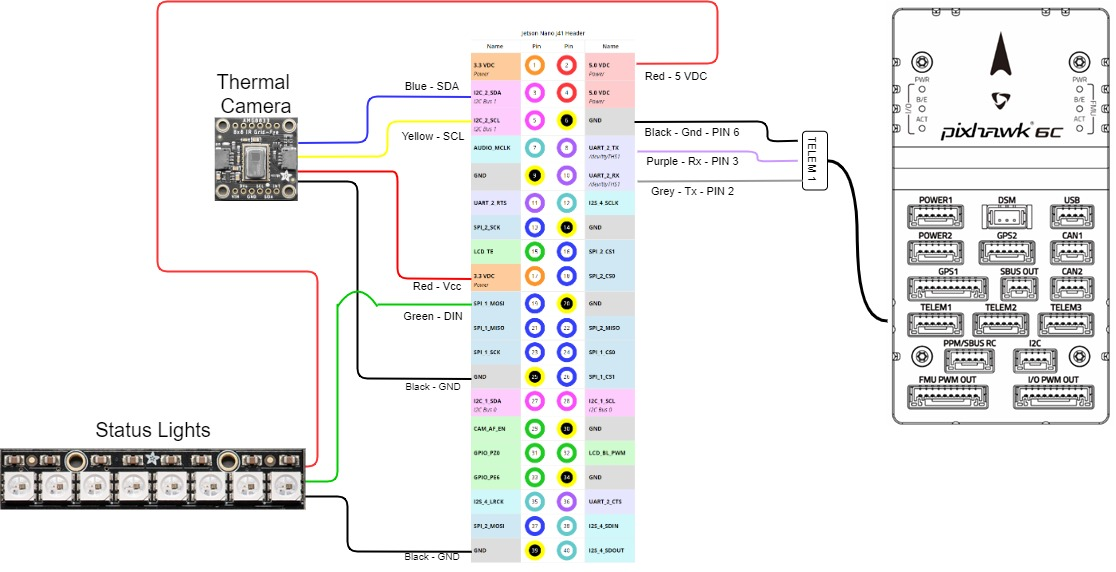
VMC pinout
Using tweezers you will remove pins 1, 4, and 5 from the Pixhawk connector. This is done by prying the plastic tab for each pin as shown in the photo below.
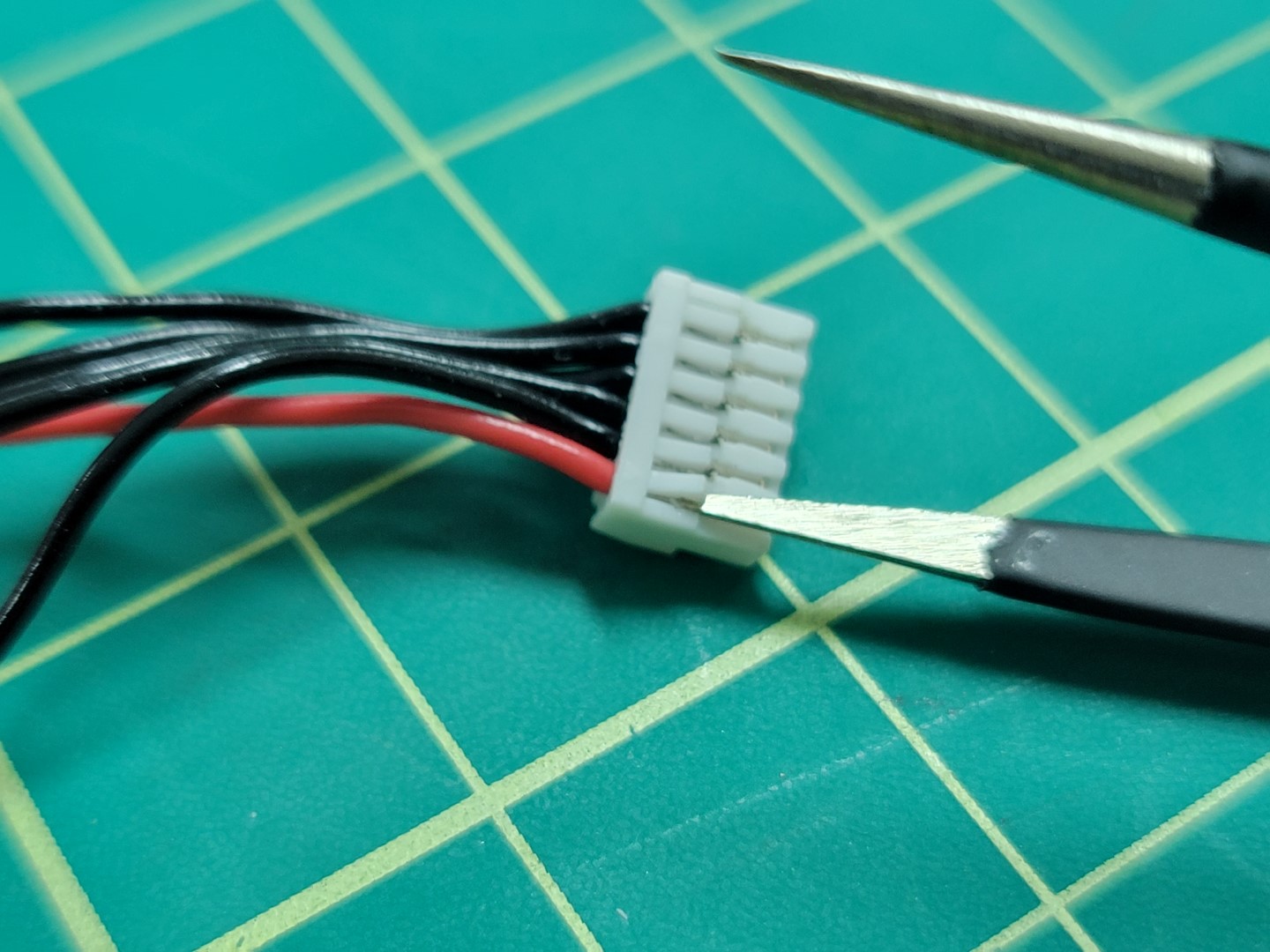
Removing pin 1 from the telemetry connector
The photo below shows only the necessary pins remaining: pin 2, 3, and 6 from left to right.
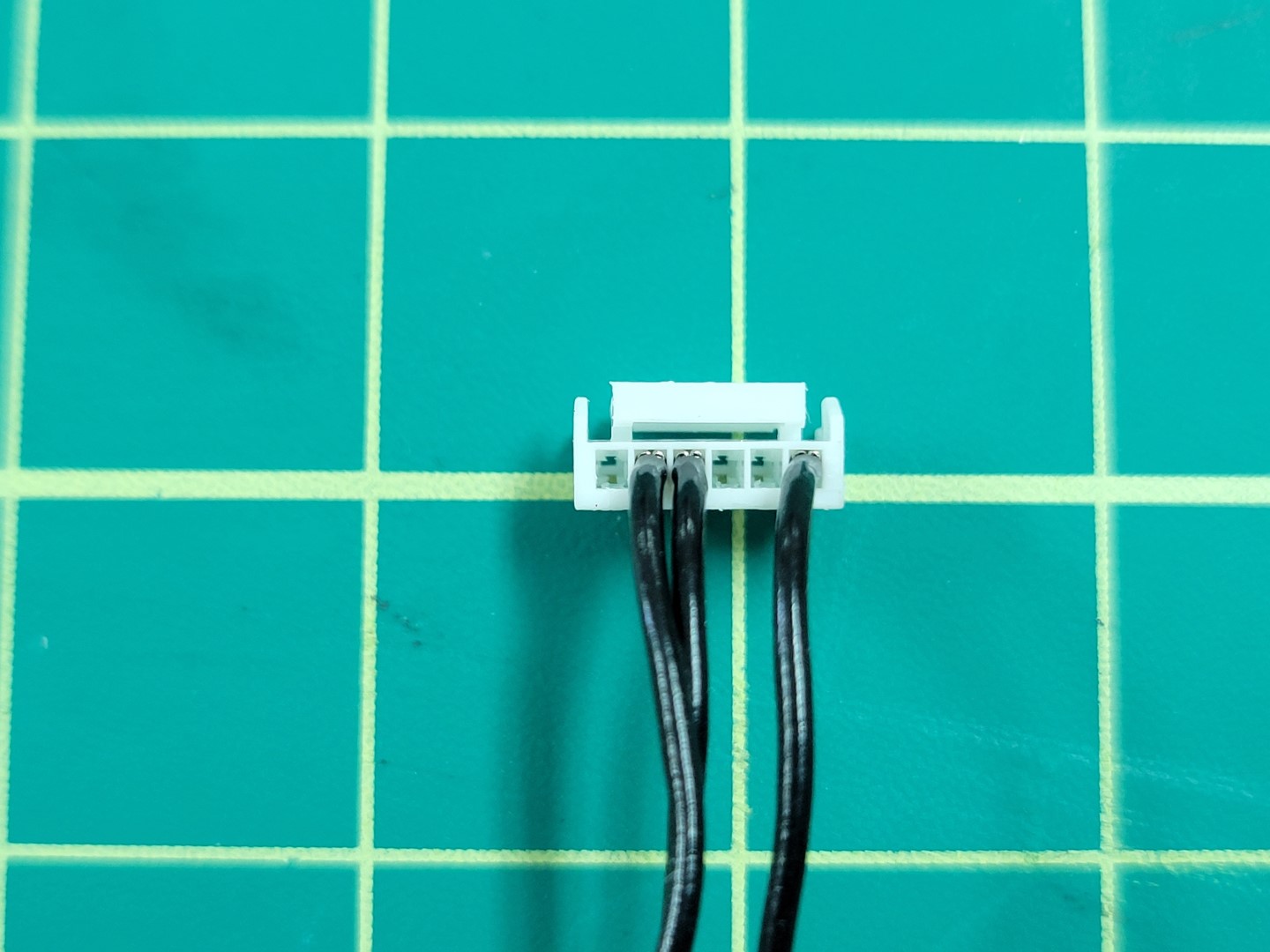
Telemetry wires: TX, RX, and GND
Clip the connector from the other end of the Pixhawk cable. Cut all three of the individual female-female wires to approximately 2-3". Strip 1/2" of shielding away from all wires as shown in the photo below.
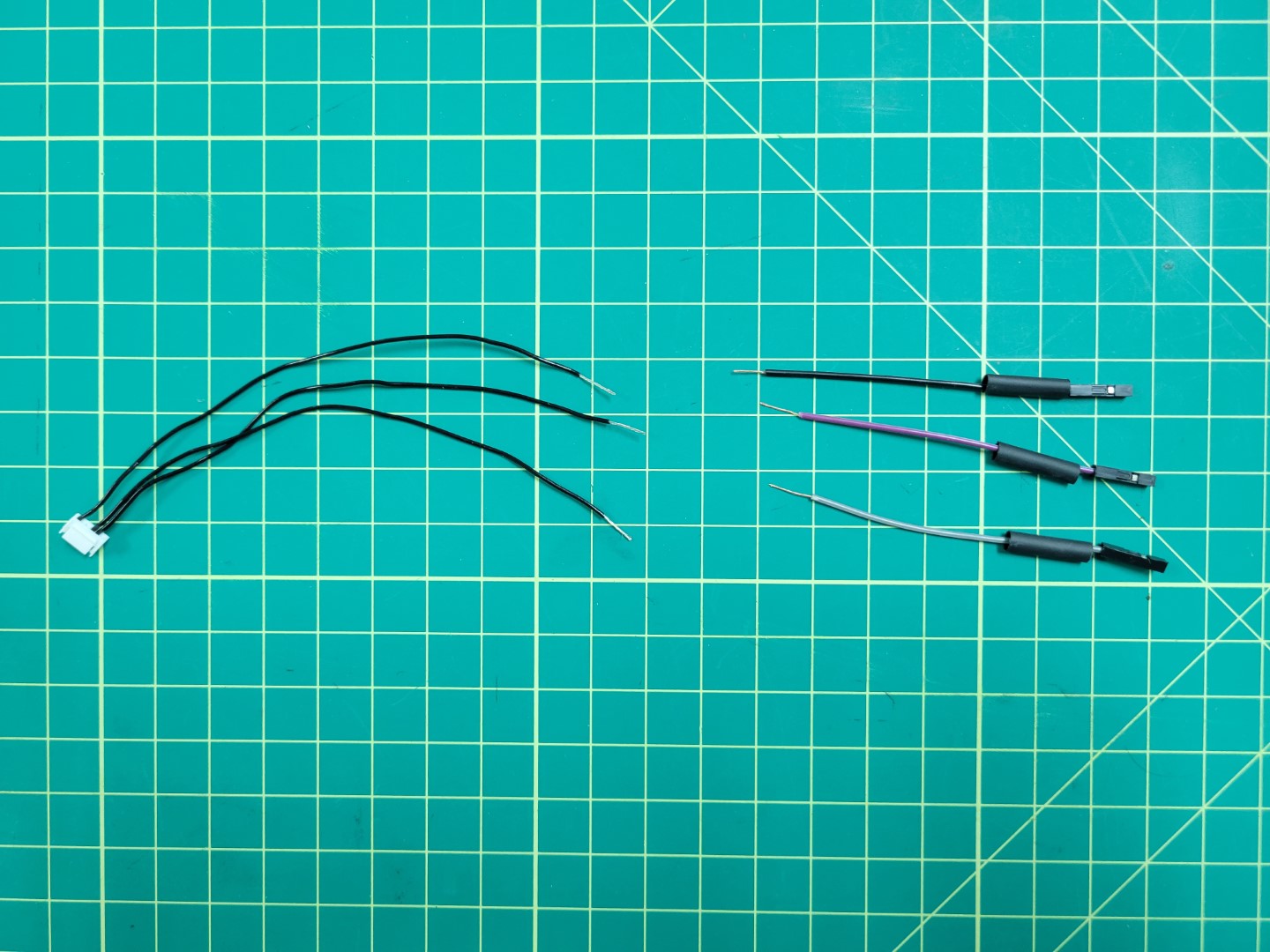
Wire prep for soldering
Prior to soldering make sure each colored wire matches the corresponding pin. The photo below shows one final check before soldering.
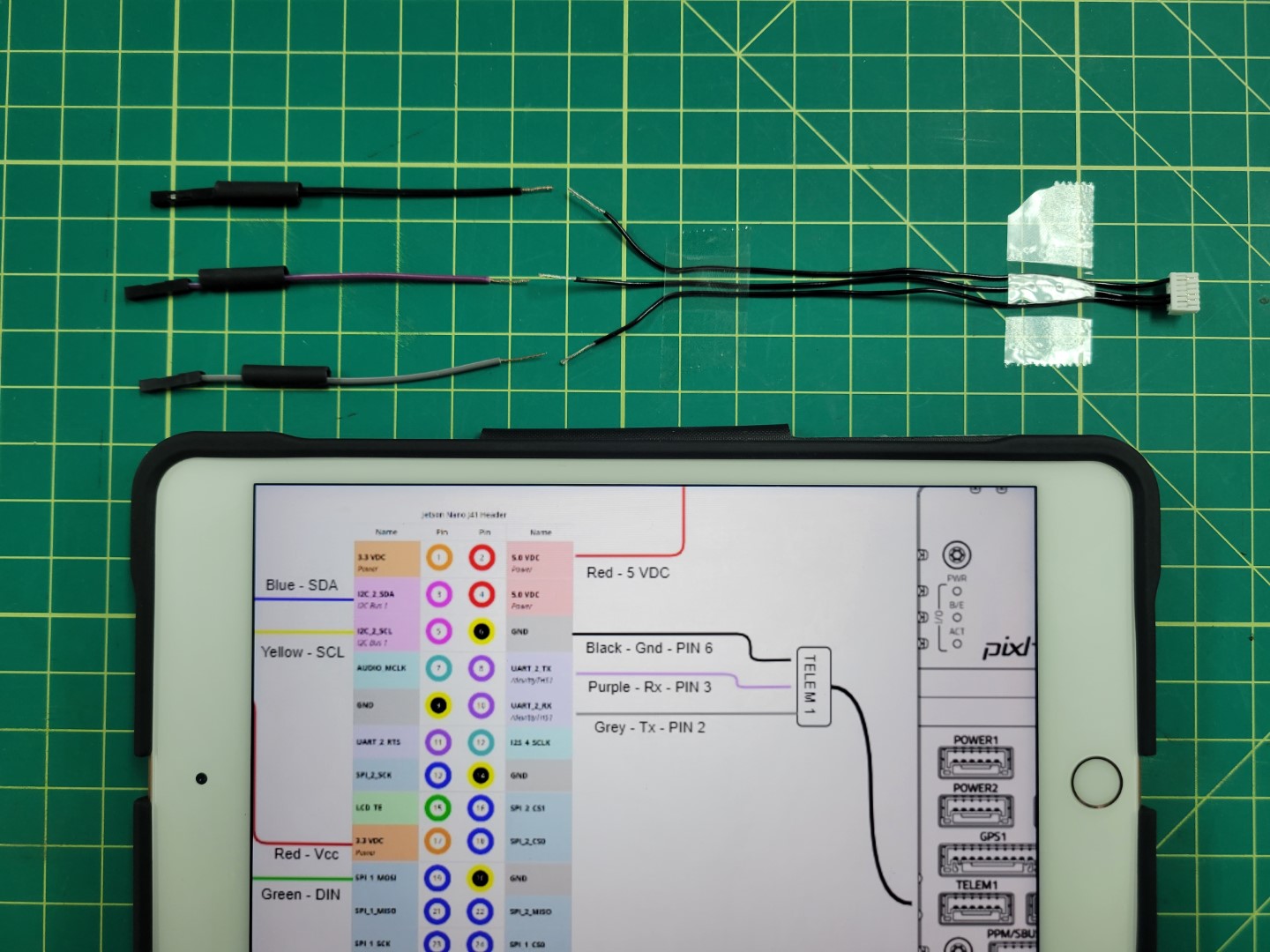
Confirming layout before soldering
Join the wires using the “Twisted Helix” method we covered in the ESC wiring during basic assembly.
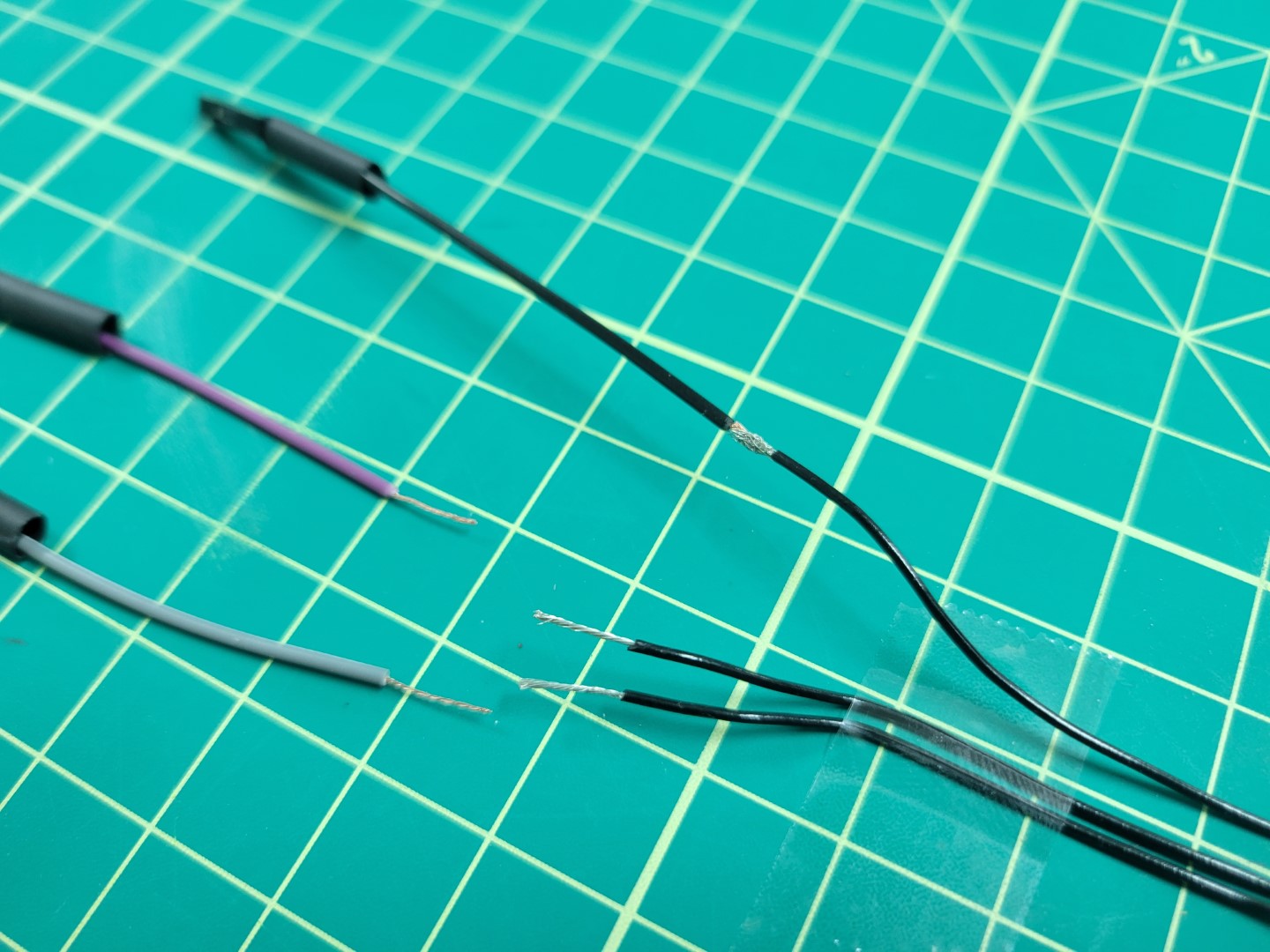
Joining wires prior to soldering
Solder all three wires and apply heat shrink.
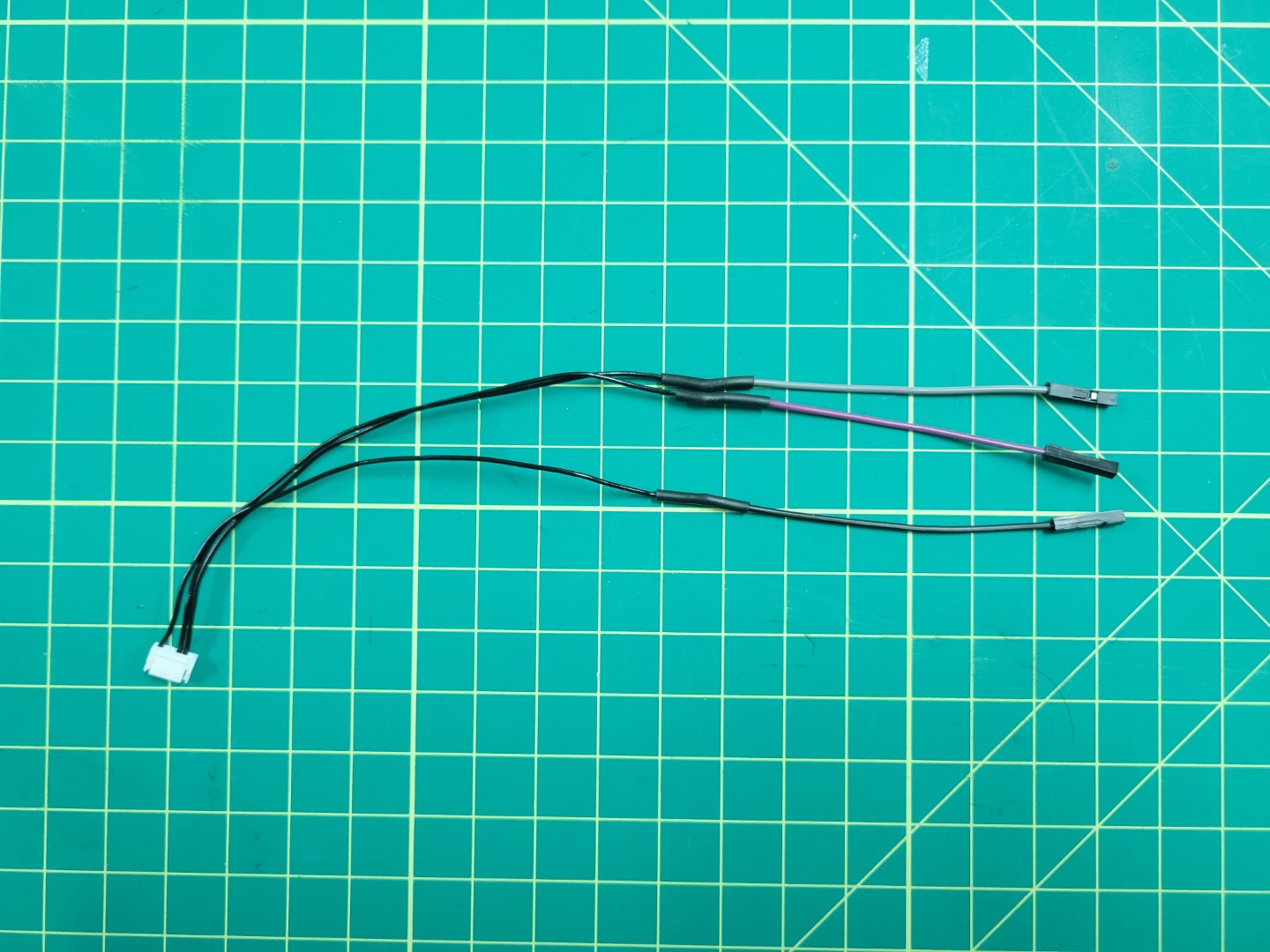
Telemetry cable with all three wires soldered
Remove the plastic connectors from the grey, purple, and black wires.
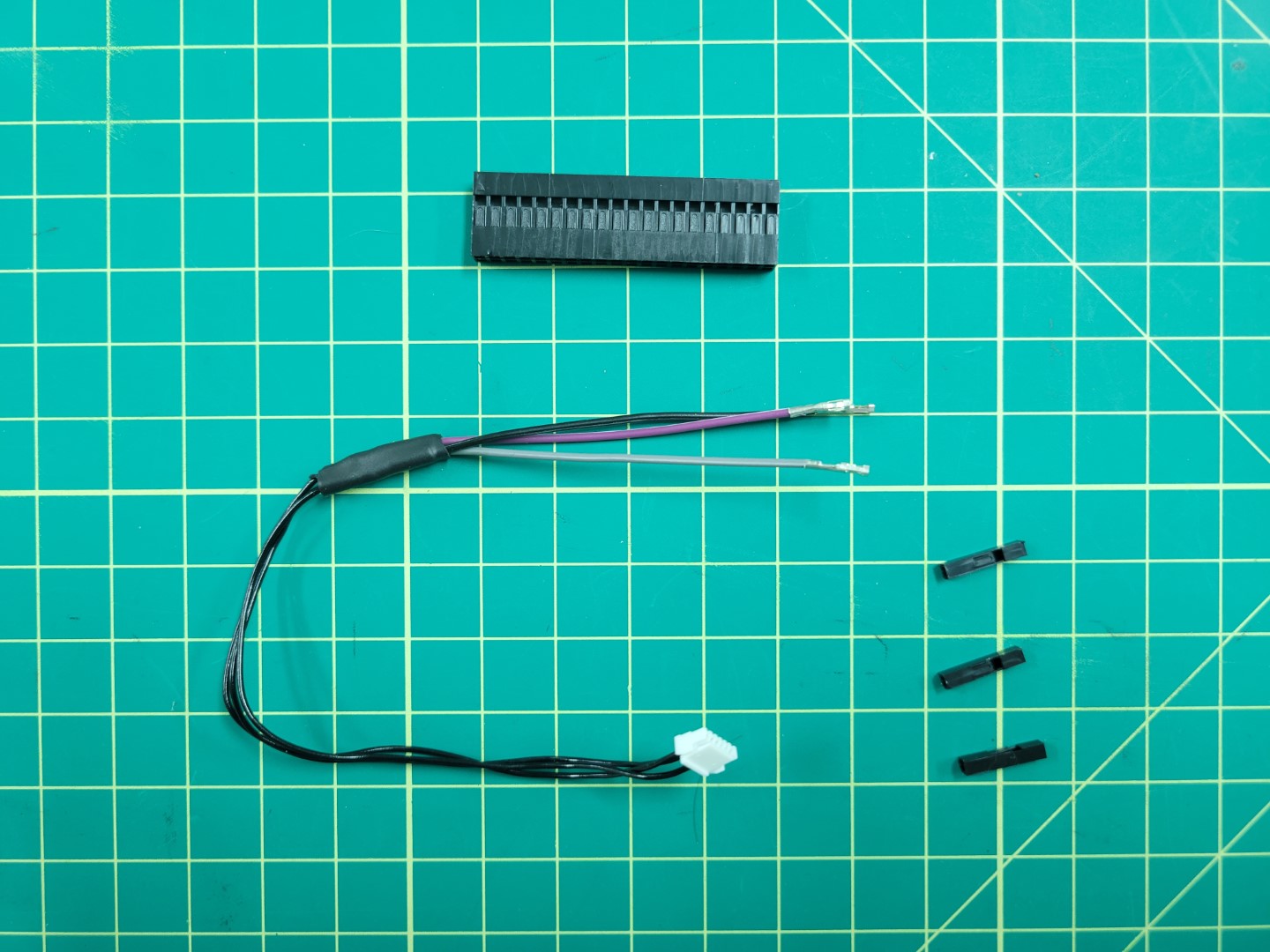
Plastic connectors removed
Insert all three wires into the 40 pin connector housing as shown in the following photos. If you’re uncertain where to insert the wires refer back to the diagram in the overview section.
Make sure you hear each of the pins click into the connector housing. Inserting them properly into the housing will prevent them from accidentally getting pulled out.
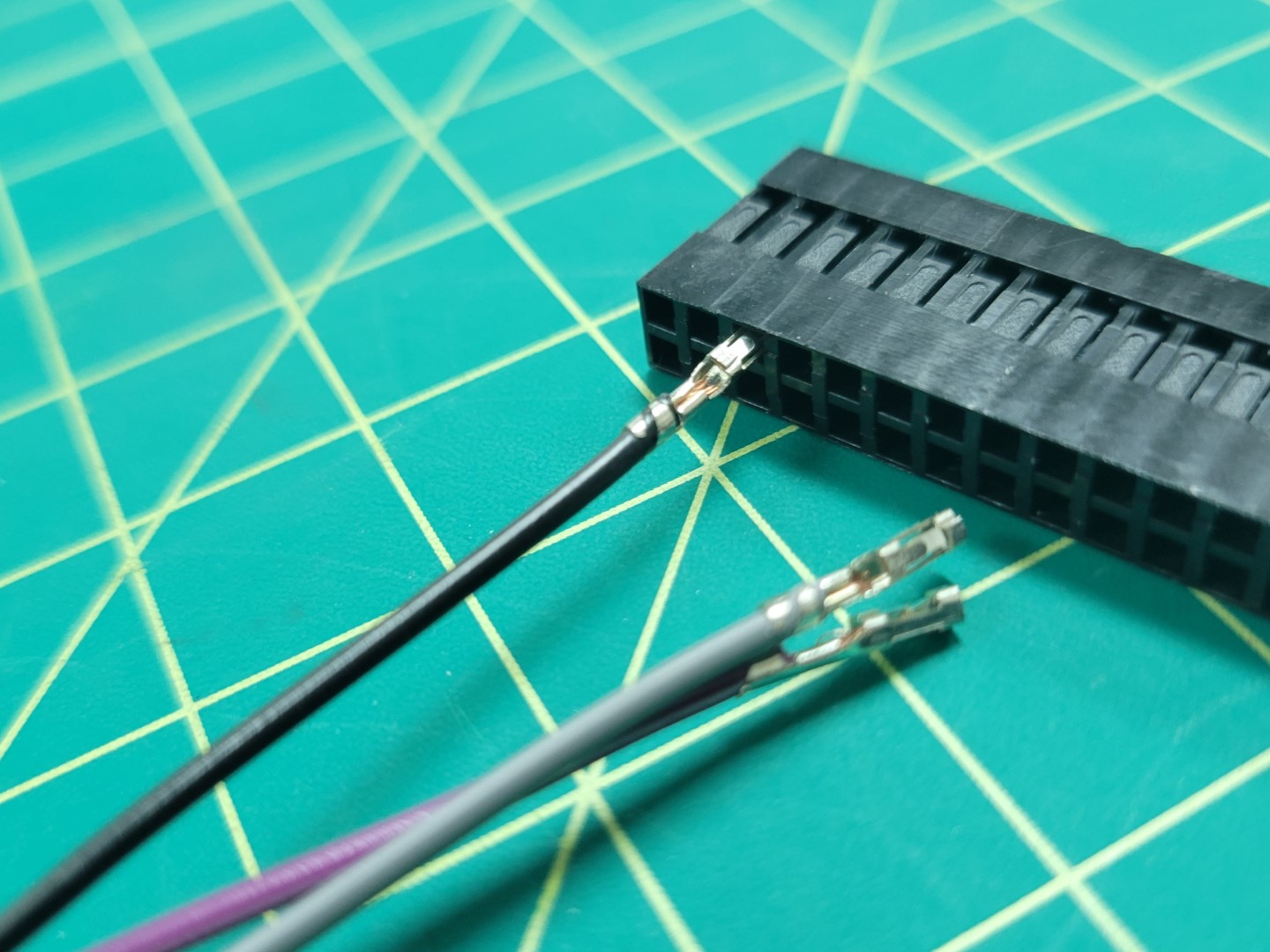
Adding telemetry wires to 40 pin connector
Now that your telemetry cable is complete you can do a test fit. Pay attention to the orientation of the 40 pin connector as seen in the photo below.
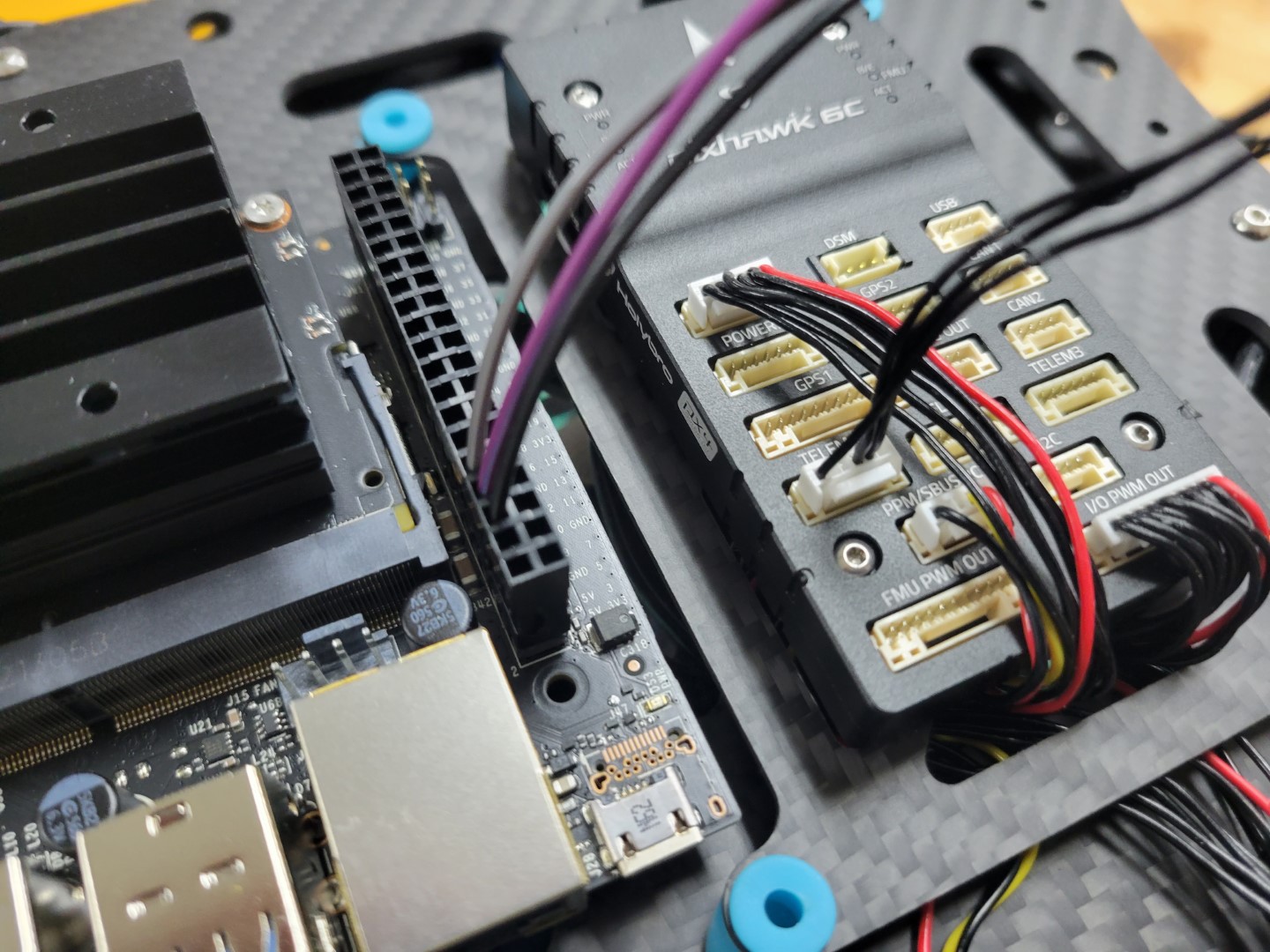
Telemetry cable connected to VMC and Pixhawk TELEM1 port
←Previous Next→